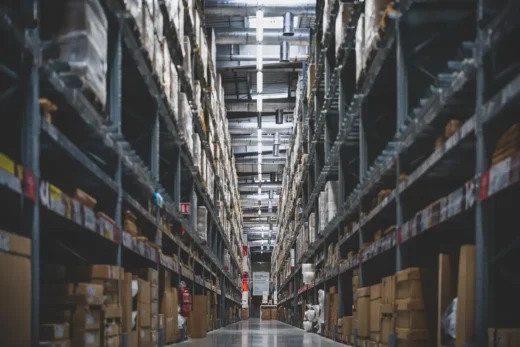Warehouse work made safer, typical mistakes and how to steer clear of them, House cooking space, Property dining area
Warehouse Work Made Safer: Typical Mistakes and How to Steer Clear of Them
15 April 2025
Warehouses are the heart of logistics, fulfillment, and supply chain operations. But behind the steady movement of goods lies a high-risk environment. Heavy equipment, towering shelves, and a fast pace can easily turn into a hazard zone without proper precautions. Understanding the most common safety mistakes—and how to avoid them—is essential for protecting both personnel and inventory.
Let’s break down the typical errors that compromise warehouse safety and look at actionable steps to prevent them.
- Neglecting Proper Training
Many warehouse accidents begin with inadequate training. New hires, temporary workers, or even long-time employees operating unfamiliar equipment without the necessary instruction pose a significant risk.
Why It Happens:
Time pressures lead supervisors to cut corners on training. It’s faster to “show and go” than to walk someone through formal procedures.
How to Avoid It:
Every employee should go through a structured onboarding program. For equipment operation—like forklifts or pallet jacks—certifications must be up-to-date. Refresher courses and periodic evaluations help reinforce safe habits.
OSHA reports that proper training can reduce workplace injuries by up to 50%.
- Poor Housekeeping Habits
A cluttered warehouse isn’t just inefficient—it’s dangerous. Stray cords, stacked boxes, and spilled liquids are accidents waiting to happen.
Why It Happens:
When productivity is prioritized, cleaning and organizing often get pushed aside.
How to Avoid It:
Implement a “clean-as-you-go” policy. Walkways must be clear, spills cleaned immediately, and tools returned to their designated areas. Encourage employees to report hazards the moment they notice them.
- Ignoring Equipment Maintenance
Forklifts, conveyors, and other warehouse machinery experience wear and tear. When ignored, minor issues snowball into serious breakdowns or safety hazards.
Why It Happens:
Maintenance downtime is often viewed as a productivity killer, so checks are skipped or postponed.
How to Avoid It:
Create and adhere to a maintenance schedule. Regular inspections should be mandatory. Assign accountability to specific team members or departments to ensure consistency.
One overlooked but crucial area is the use of accessories. For example, adding a forklift trailer hitch may enhance versatility, but only when used correctly and maintained properly. Malfunctioning add-ons can become just as dangerous as faulty core equipment.
- Improper Lifting and Manual Handling
Back injuries and muscle strains remain one of the most reported warehouse incidents. Improper lifting techniques, especially with oversized or heavy loads, are to blame.
Why It Happens:
Workers may rush, take shortcuts, or overestimate their strength. Lack of mechanical aids doesn’t help either.
How to Avoid It:
Train staff on safe lifting: bend the knees, keep the load close, and avoid twisting. Encourage the use of dollies, lift-assist devices, or team lifts for heavy or bulky items.
- Overloading Racks and Shelves
Storage systems are designed with load limits in mind. When those limits are ignored, shelves can collapse or tip over, putting lives at risk.
Why It Happens:
Inventory surges and limited space often push workers to cram more items onto shelves than they’re meant to hold.
How to Avoid It:
Clear signage should indicate maximum load capacities on every rack. Supervisors must regularly inspect storage areas for signs of stress—bowed beams, leaning shelves, or overloaded pallets are all red flags.
- Unsafe Forklift Operation
Forklifts are a leading cause of warehouse injuries. From speeding to turning corners too sharply, improper forklift use has dire consequences.
Why It Happens:
Operators may grow overconfident or become complacent. In high-demand periods, they might rush or skip safety steps.
How to Avoid It:
Only trained and certified individuals should operate forklifts. Enforce speed limits, designated forklift lanes, and blind spot mirrors. Daily inspections of brakes, steering, and hydraulic systems are a must.
Forklift accessories should also be assessed for safety. A trailer hitch or lifting boom can be helpful tools—but only when installed and used correctly. Regularly inspect attachments to ensure they don’t hinder the equipment’s performance or stability.
- Lack of Proper Signage and Markings
Warehouses without clear signage are a recipe for confusion and accidents. Whether it’s unclear fire exits, unmarked hazardous zones, or faded floor markings, lack of communication can quickly escalate into emergencies.
Why It Happens:
Paint wears off. Signs fall down. Sometimes, employees don’t even realize what’s missing until it’s too late.
How to Avoid It:
Perform regular walkthroughs focused solely on visual safety cues. Refresh floor tape and wall signs when they fade or become illegible. Use color-coded zones to differentiate between walking paths, loading areas, and emergency exits.
- Failure to Use Personal Protective Equipment (PPE)
Helmets, gloves, steel-toed boots, and safety vests aren’t suggestions—they’re essential. Yet many employees skip them for comfort or convenience.
Why It Happens:
Some gear may feel restrictive or unnecessary, especially in roles where hazards aren’t always visible.
How to Avoid It:
Make PPE compliance a non-negotiable part of warehouse culture. Supervisors should lead by example and reinforce expectations. Keep replacement gear stocked and accessible to remove excuses.
Final Thoughts: Safety Isn’t a One-Time Task
Warehouse safety isn’t about a checklist you complete once. It’s an ongoing mindset and a culture that needs reinforcement every day. The most effective warehouses don’t just react to accidents—they prevent them through proactive education, organization, and accountability.
Avoiding these common mistakes not only protects employees but also enhances efficiency, lowers costs, and builds a better work environment. In the end, safety isn’t just a rule—it’s a smart business decision.
Comments on this guide to Warehouse Work Made Safer: Typical Mistakes and How to Steer Clear of Them article are welcome.
Home Kitchen Design
Home Kitchen Design Style
Designing a Stylish and Modern Kitchen
5 Dream Kitchen Trends People Regret
The benefits of a bespoke kitchen
Selection and care tips of marble worktops
How to maximize bespoke kitchen functionality
Home Design
Home Design Articles
Comments / photos for the Warehouse Work Made Safer: Typical Mistakes and How to Steer Clear of Them page welcome.






